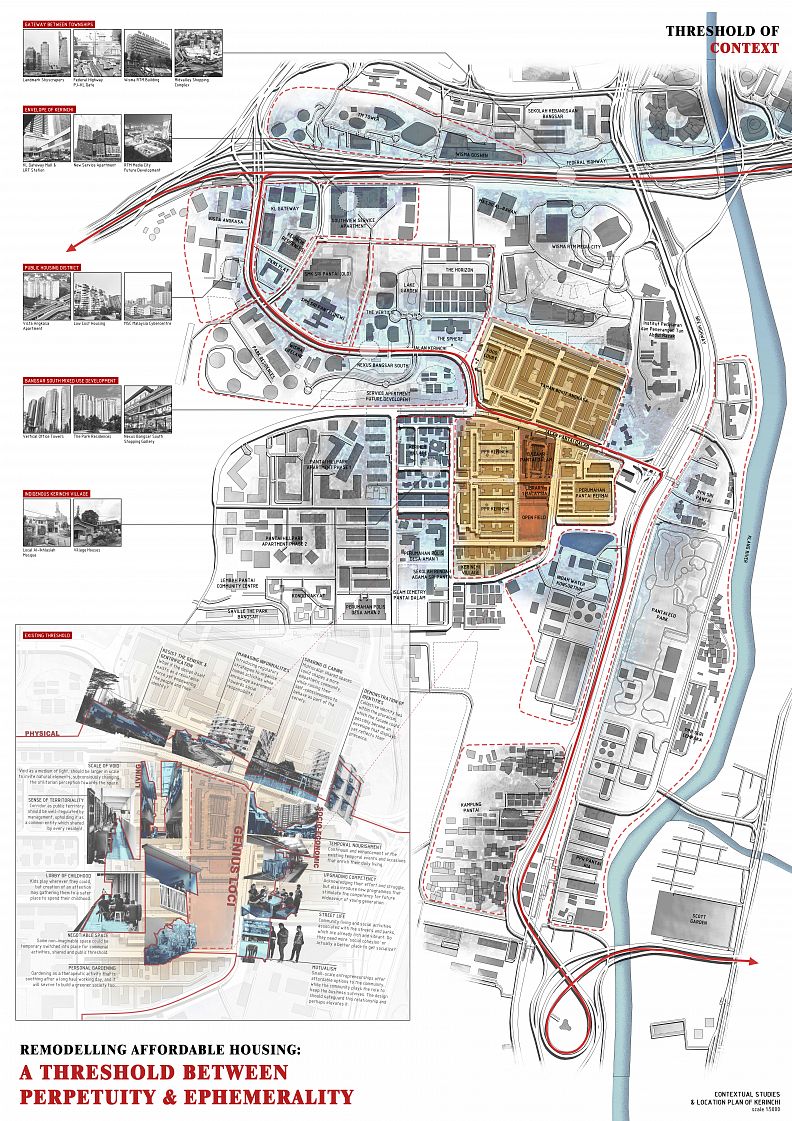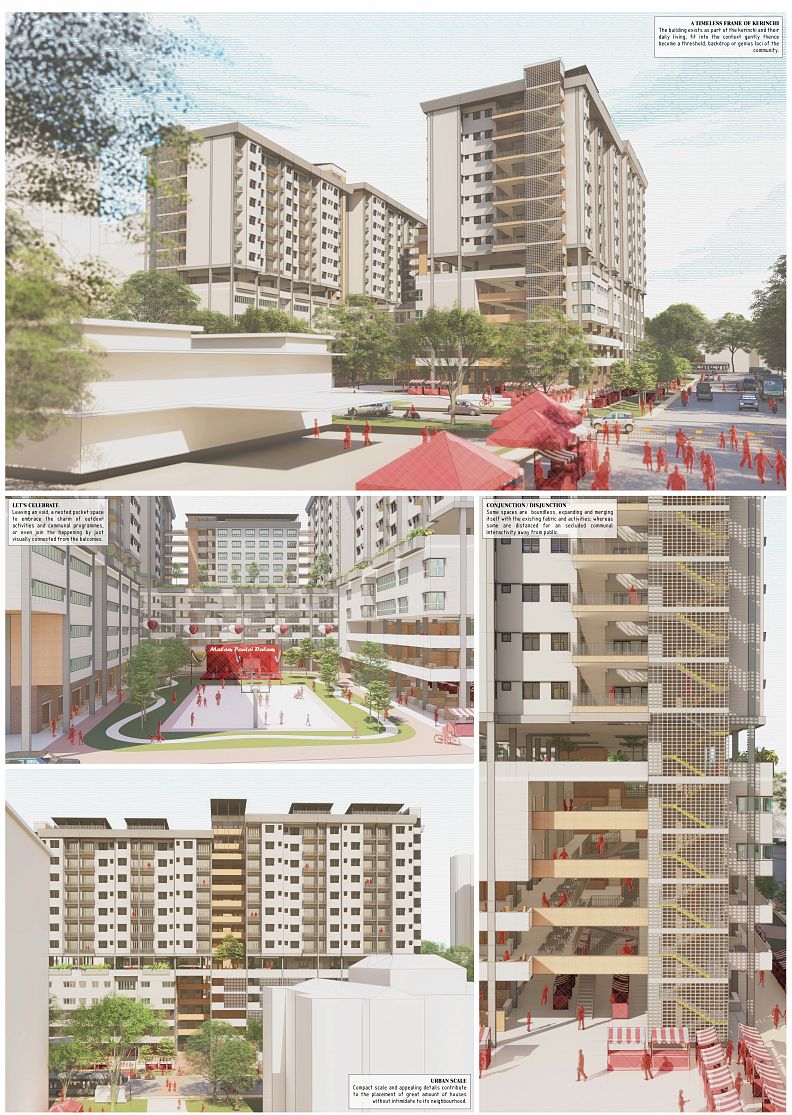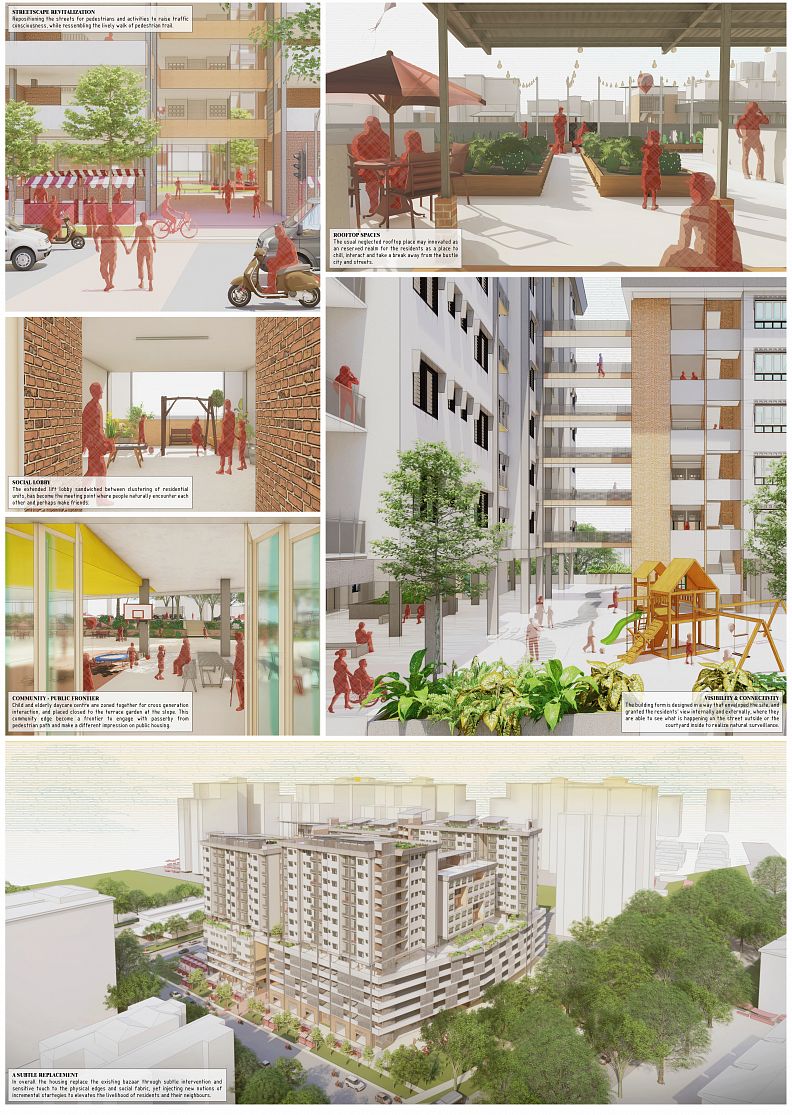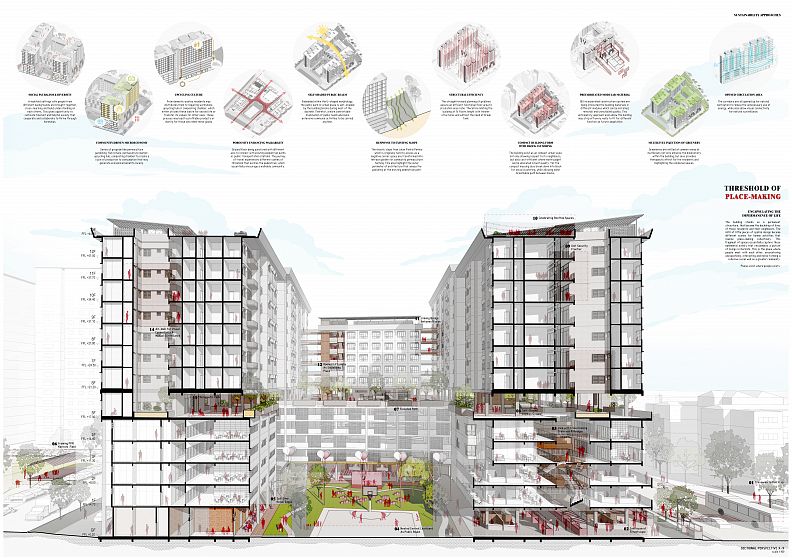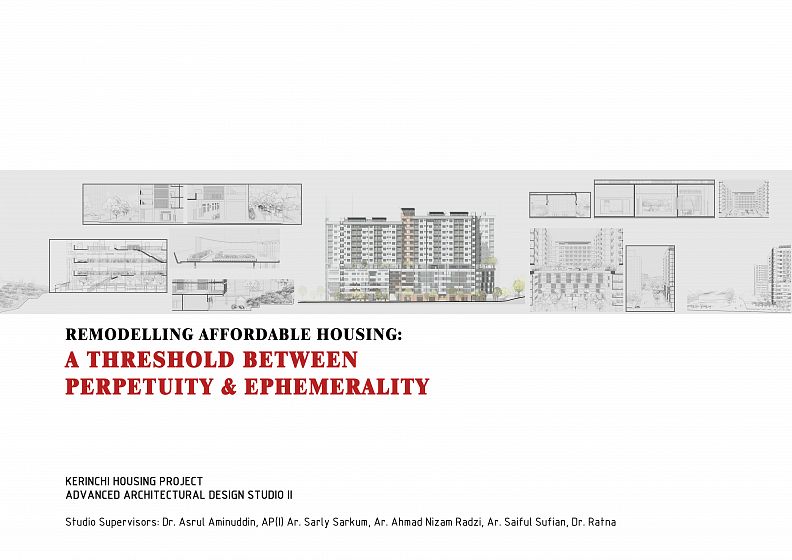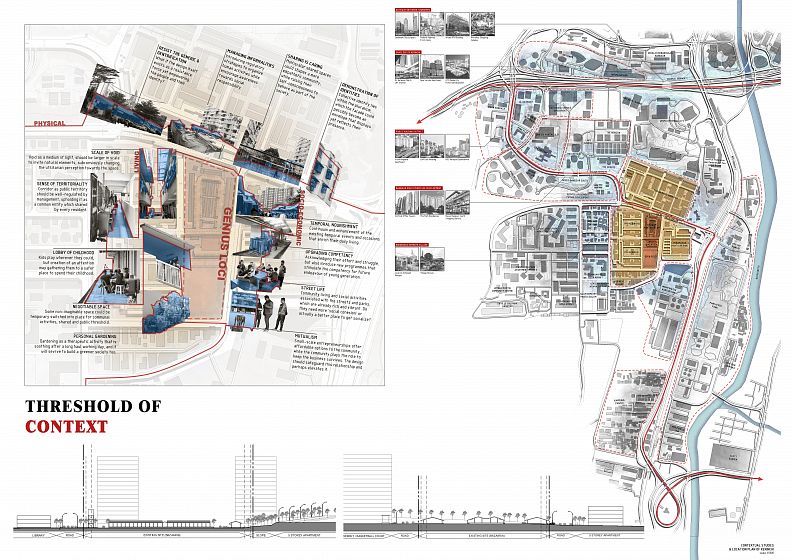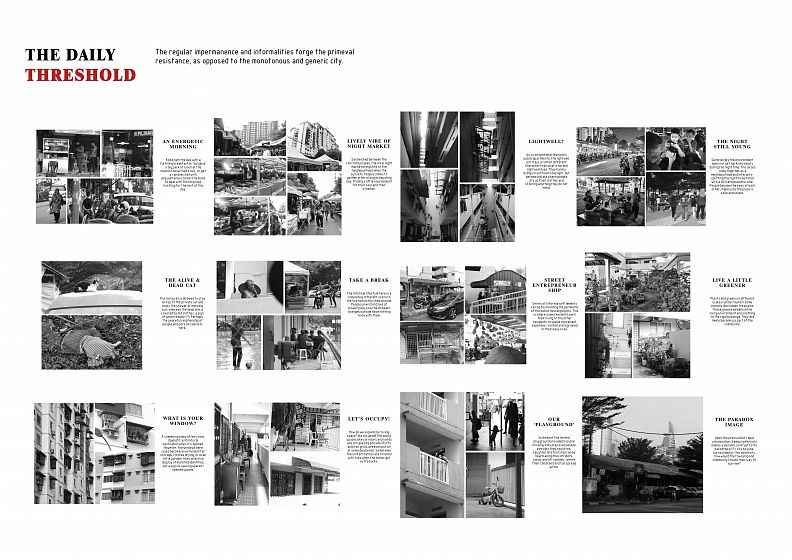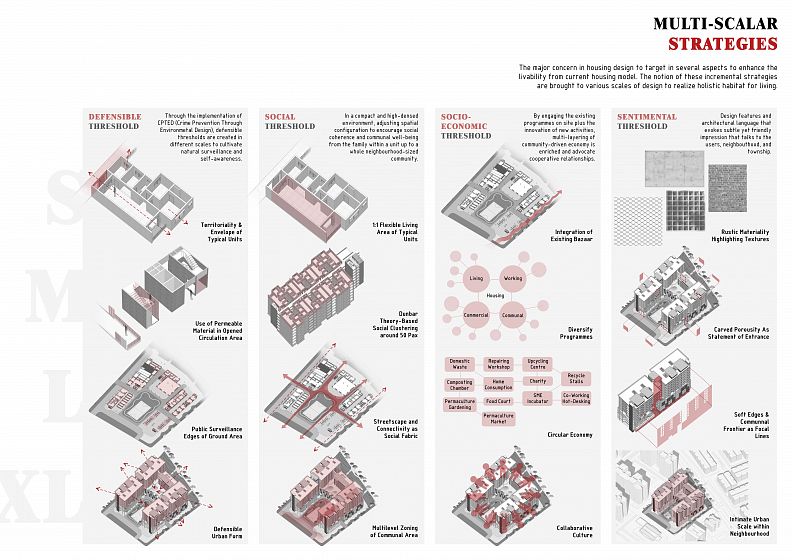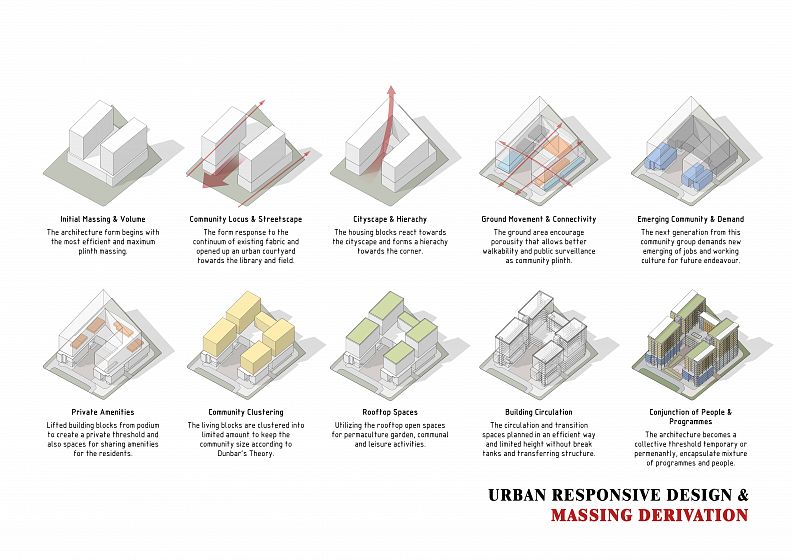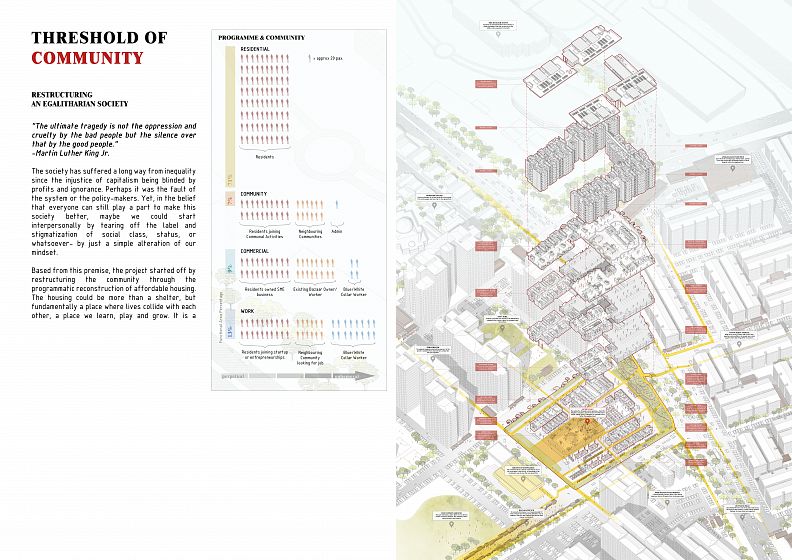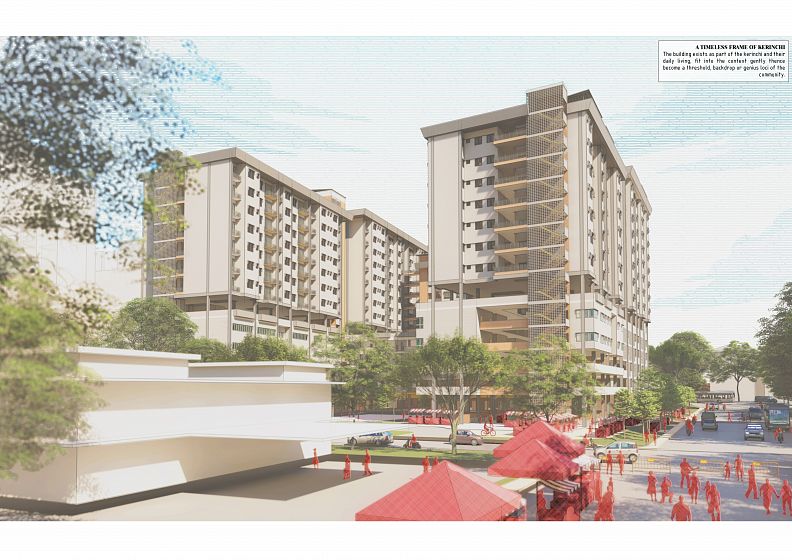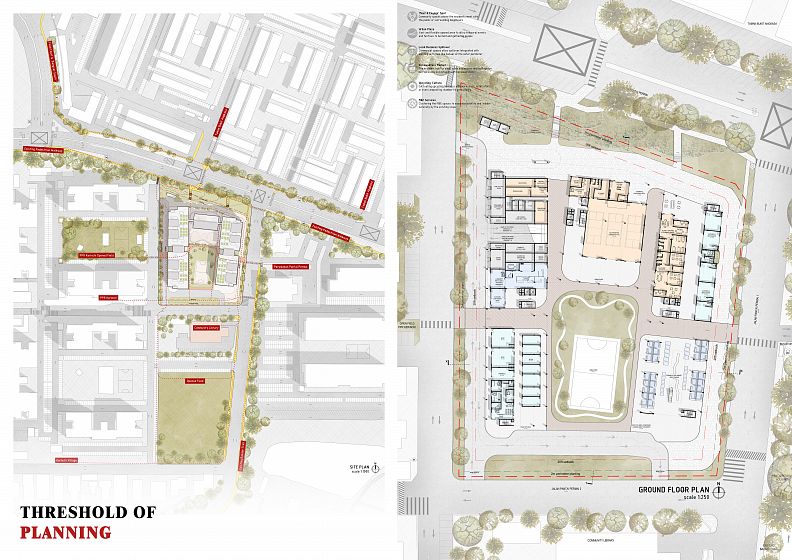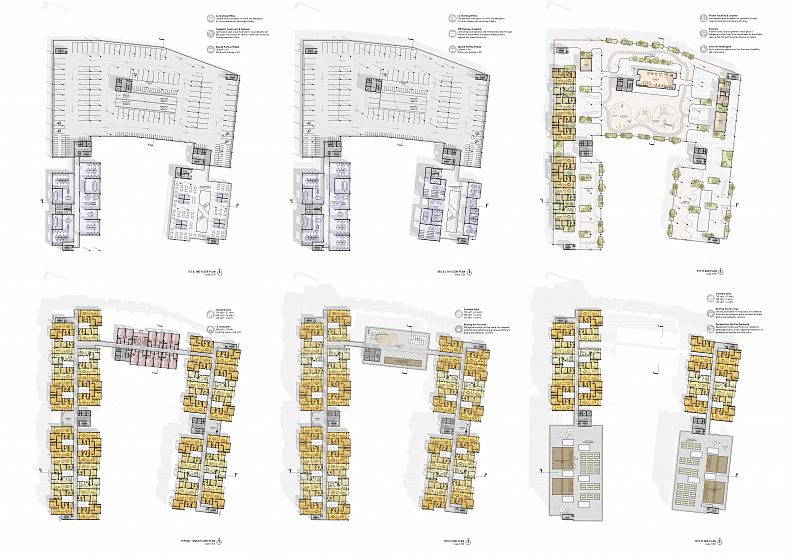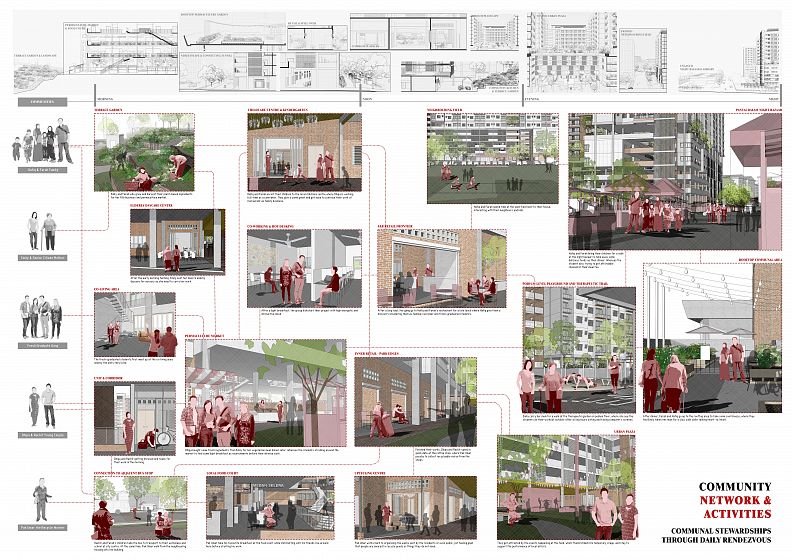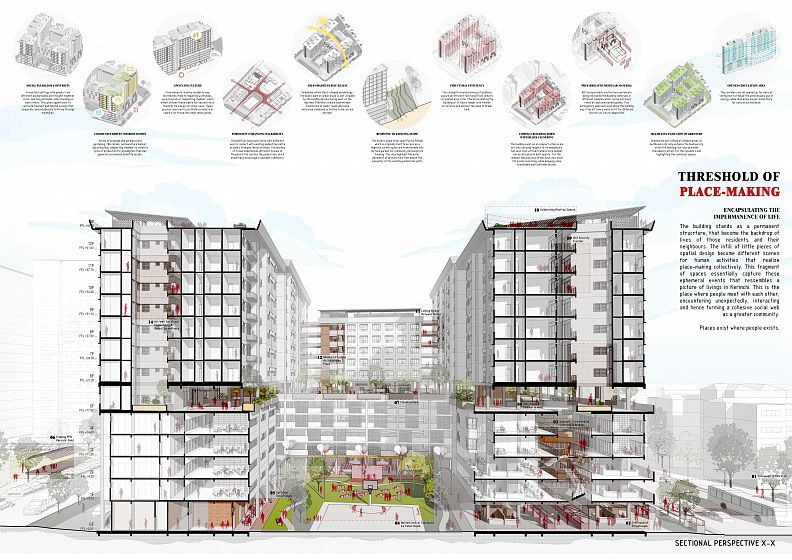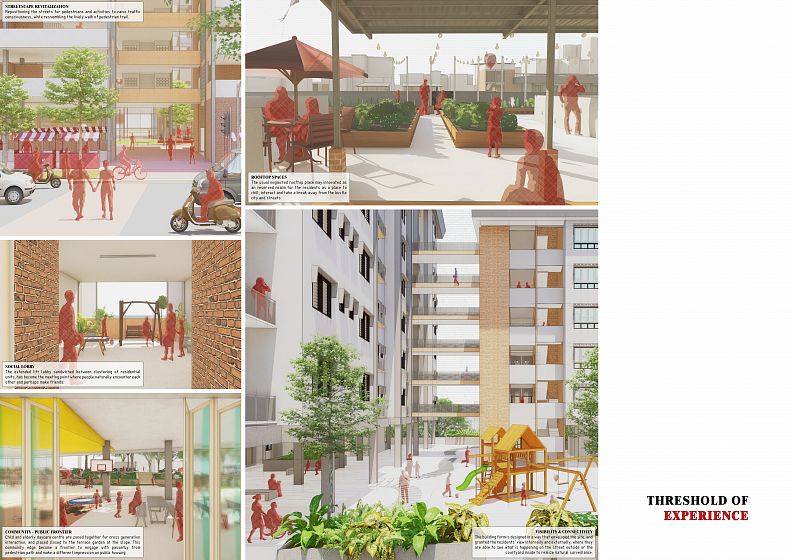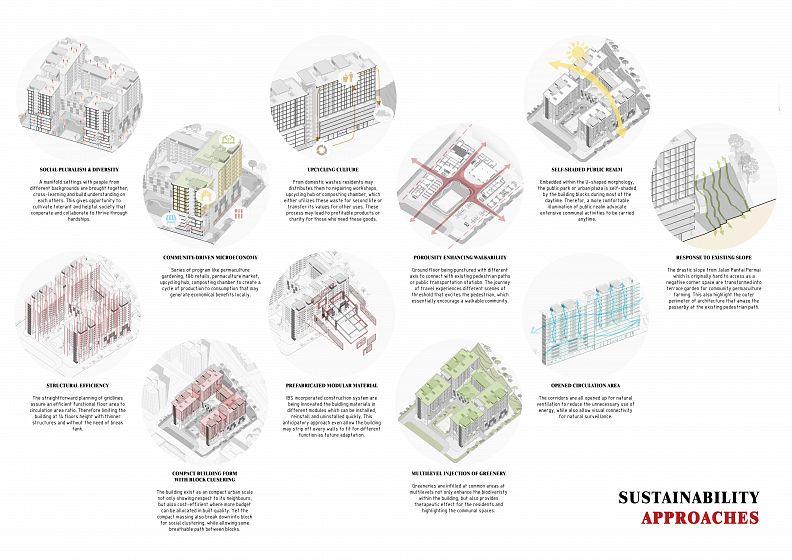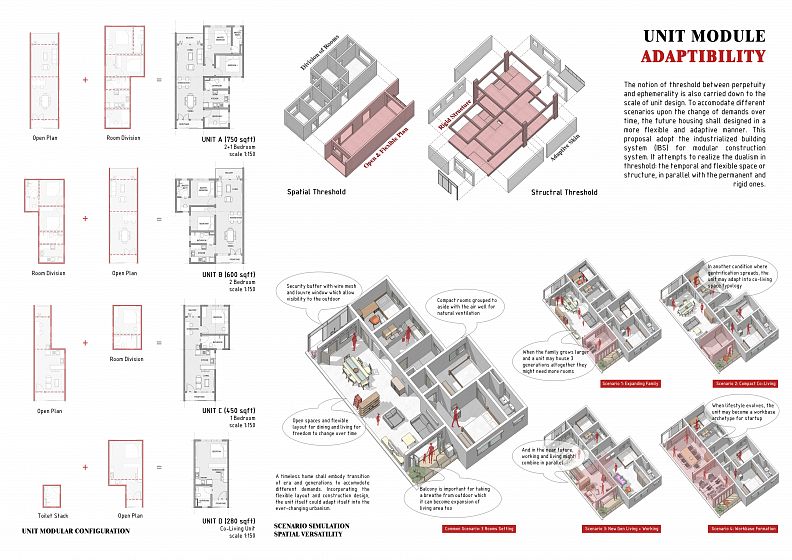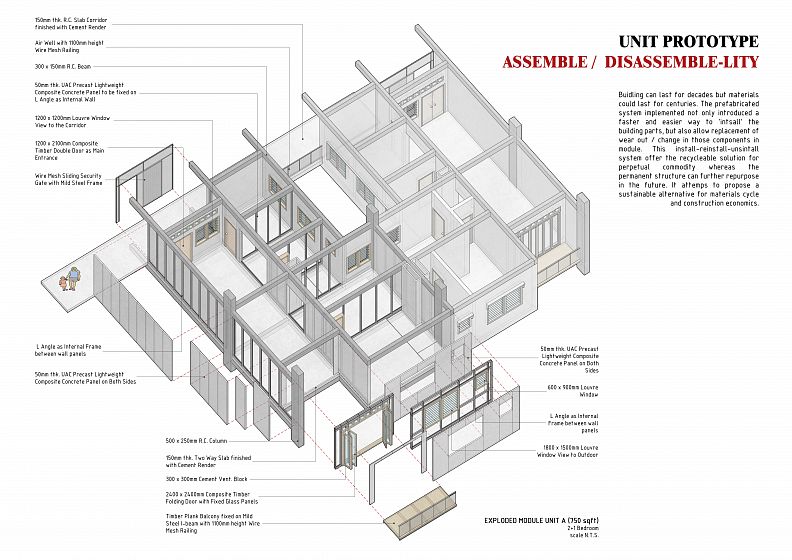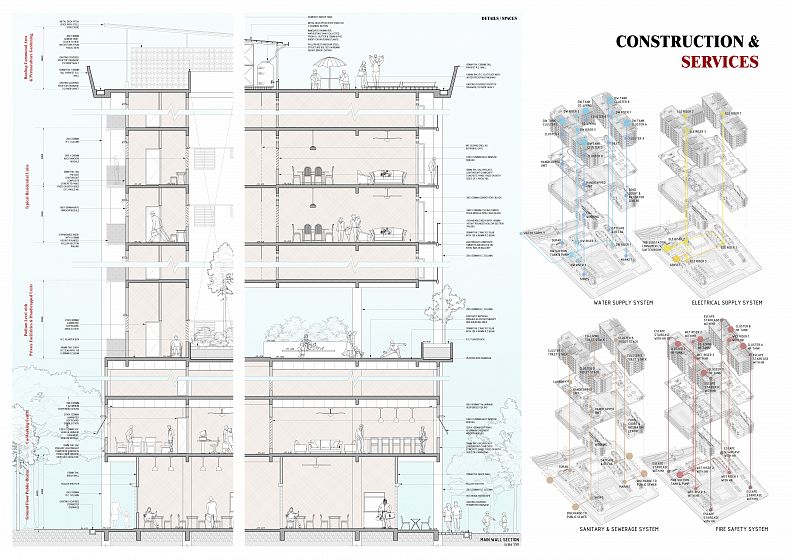REMODELLING AFFORDABLE HOUSING: A THRESHOLD BETWEEN PERPETUITY & EPHEMERALITY

Project idea
‘Affordable Housing’ is a widely debated topic in the field of built environment, and usually being discussed extensively to correlate with politics and economy as well. Realizing the existing issues and symptoms of affordable housing scheme may dependent to multi-scalar factors and systematic failures, therefore the project begins with the emphasis on contextual approach and reshaping of social fabric to rectifying the controversies and changes. Incorporating a bottom-up process, the design addresses different concern in a formulated sequence: context - community - programme - urban strategies - design objectives.
Situated in the center of Kampung Kerinchi, the site is originally an existing bazaar that serves the surrounding neighbourhood as a community locus. The journey travel from Federal Highway to the site implies a transition of threshold- from the towes of Bangsar South mixed use developments, to the congested public housing district and village with many informal settlements. These ‘thresholds’ are an embodiment of difference in human activities, community living, programme compositions and urban morphology. So, how would the proposed design could poses itself in this context as part of the ‘threshold’?
Project description
To encapsulate these existing qualities, the project addresses the potential users to cultivate a collective community which celebrates pluralism. Affordable housing could possibly being remodeled with multi-layering of programmes to involve different groups of community, in order to shape a cross-learning and collaborative environment that empowering people break free from the vicious cycle of financial difficulties. The programmatic revamp and micro-economy of affordable housing becomes a notion to innovate in response to counter against the monotonous position of current affordable housing design, which is seemingly ‘just a place of sheltering’.
Within an urban context, the design implements the concept of ‘threshold’ as part of the urban design strategies, design details and interventions. The thresholds can be interpreted as a transitional space, feature or programme where the ‘ephemerality’ happens- the conjunction of people, unexpected rendezvous, temporal events and daily shifting of activities. Whereas this set of strategies become the framework, portraying the ‘perpetuity’ of architecture that upholds the design objective- managing change. This duality shares a symbiotic relationship to realize an adaptive model of affordable housing.
Conclusively, the proposed affordable housing scheme is an alternative to current housing models, manifesting an egalitarian ideology to cultivate a more open-minded, tolerate and enlightened community. This diverse yet resilient community formed based on the social coherence and collaborative manner, shall thrive through the harsh circumstances and difficult times- realizing their own qualities to emerge for future endeavours.
Technical information
A Bottom Up Process to Reshaping Housing Model
The remodelling process begins from the parameters of existing issues and symptoms faced by the target users of affordable housing. It then leads to repurpose the architectural programmes to be involved with the participatory of community and surrounding neighbourhoods, in order to realize a strong relationship between people and their livelihood. Therefore, the architecture shall play a role to empowering its people in such urban context through its function, planning, language and environment. Based from this cooperative system and self-supported foundation only it may escape the difficulties encountered by current public housing scheme.
Communal Stewardship Through Daily Rendezvous
The usual public housing itself exists as collective dwelling, inevitably bring people under a same roof and living altogether, but not necessarily build a close-knit community. People might live without knowing their neighbour, implying a weaker sense of belonging and lack of mutual stewardship on one another. In the case of low-cost public housing, the social threshold between residents is essentially to be readjusted in a way where people may move forward to the notion as the whole housing is shared mutually by each other and the responsibilities are equally important to anyone else living inside.To realize these responsibilities, the residents shall first involved in the building programme which is tailored to be participatory-driven so people do recognize each other through the process with day goes by. These relationships build the elemental foundation to cultivate stewardships and then a cohesive community- mindful yet tolerant.These series of scenes re-imagine the possibilities of different lifestyles and backgrounds of people might overlapped on each others, under the controlled schemes and programmes that the architecture signifies. Yet, the rendezvous are happened such naturally and the inception of surveillance among peers is instill subconsciously- rendering a subtle resolution of community-making in a collective dwelling.
Unit Module Adaptibility
The notion of threshold between perpetuity and ephemerality is also carried down to the scale of unit design. To accomodate different scenarios upon the change of demands over time, the future housing shall designed in a more flexible and adaptive manner. This proposal adopt the industrialized building system (IBS) for modular construction system. It attempts to realize the dualism in threshold: the temporal and flexible space or structure, in parallel with the permanent and rigid ones.
Buidling can last for decades but materials could last for centuries. The prefabricated system implemented not only introduced a faster and easier way to ‘intsall’ the building parts, but also allow replacement of wear out / change in those components in module. This install-reinstall-unsintall system offer the recycazaleable solution for perpetual commodity whereas the permanent structure can further repurpose in the future. It attemps to propose a sustainable alternative for materials cycle and construction economics.
A timeless home shall embody transition of era and generations to accomodote different demands. Incorporating the flexible layout and construction design, the unit itself could adapt itself into the ever-changing urbanism.
